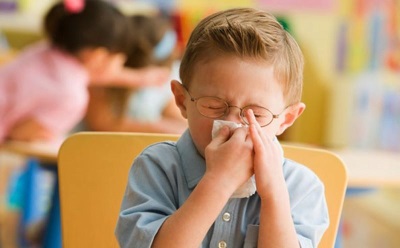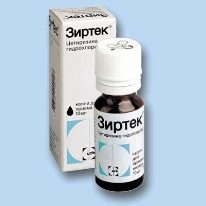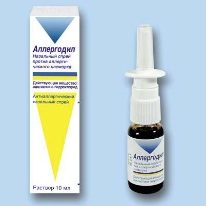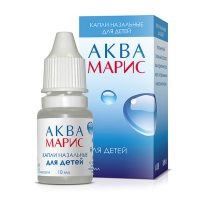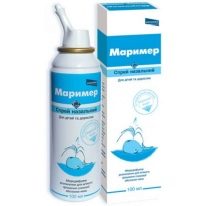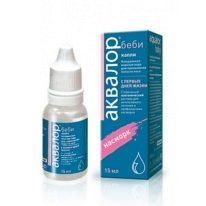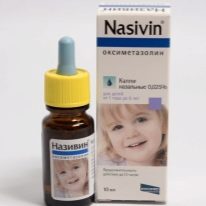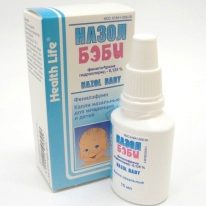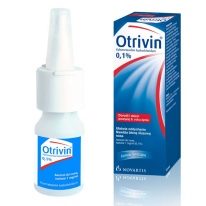Allergic rhinitis in a child: symptoms and treatment
Allergy-prone children may experience an acute or persistent runny nose of an allergic nature. It is often caused by airborne allergens, for example, dust particles, animal fur, feathers or down pillows, plant pollen. Also, the emergence of this type of rhinitis can lead to the use of allergens with food or in the form of medicines.
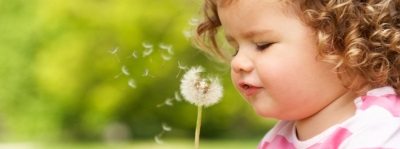
Symptoms
Allergic rhinitis in childhood is manifested by the appearance of:
- Nasal congestion.
- Watery discharge from the nose, often abundant.
- Bouts of sneezing.
- Itching in the nose, which can also be in the mouth and in the ears.
- Puffiness of the face.
- Sore throat and unproductive cough.
- Tearing, as well as discomfort in the eyes.
Such symptoms are usually characteristic of acute rhinitis caused by a single exposure to the allergen. If the child suffers from a year-round allergic rhinitis, he has:
- The nose will be stuffed throughout the year (the intensity of the stuffiness may vary).
- Periodically there will be nosebleeds.
- Perhaps the development of sinusitis and otitis media.
- May appear nasal voices.
- Snoring appears in a dream.
In severe cases, rhinitis can disrupt sleep, interfere with daily activity and learning.
How can you distinguish allergic rhinitis from the common cold?
Since the symptoms of acute rhinitis in acute respiratory viral infections and acute forms of allergic rhinitis are very similar, attention should be paid to such differences in these conditions:
- With allergic rhinitis symptoms begin to appear immediately after contact with allergens, and with ARVI, the severity of a runny nose increases during several days from the onset of the disease.
- A runny nose caused by an allergen lasts until the moment when the child is in contact with this substance, and the duration of ARVI is usually 3-7 days.
- ARVI often appears in the autumn, in the winter and in the spring, and rhinitis caused by seasonal allergens occurs during the flowering period of plants.
- Allergic rhinitis often manifests as agonizing sneezing, tearing, swelling of the face and itching. Such symptoms are very rare with ARVI.
How to determine what may be allergic to the baby, Dr. Komarovsky will tell:
Diagnostics
To confirm the allergic nature of the cold in a child spend:
- Survey of parents to identify genetic predisposition.
- A blood test and nasal discharge to detect eosinophils.
- Skin allergy tests.
- Determination of immunoglobulin E in the blood.
- Rhinoscopy (examination of the nasal cavity using mirrors).
- Ultrasound, CT or X-ray examination of the nasal sinuses.
How to treat?
All treatment of allergic rhinitis is divided into non-drug and medication treatment. Non-drug actions are to eliminate the effects of the allergen on the child’s body or mitigate its effects:
- If a child responds with a runny nose to pollen, airing the child’s room is reduced, the length of walks is reduced, and after each walk the child is bathed to remove pollen from the baby’s skin and hair.It is advisable to install air conditioning in the apartment or take out the baby during the flowering at sea. From the diet of the child should eliminate all products, the composition of which is similar to provoking runny nose allergens.
- If the cause of the allergic rhinitis is mold spores, then the apartment should be aired and cleaned more often than usual. In the fight against mold fungi use fungicides. In addition, pay attention to the installation of a humidifier and air conditioner, as well as a sufficient number of indoor plants.
- When a runny nose due to exposure to dust increased attention should be paid to cleaning, destroying dust mites and washing bed linen. From the house you need to remove carpetsand upholstered furniture is best replaced with leatherette or leather items.
- Runny nose due to pet allergy most often compels to give a pet to friends or relatives. If this is not possible, the child’s contact with the animal should be protected as much as possible and more often all rooms should be vacuumed.
- If a runny nose appears after eating allergens for food, during the exacerbation period it is important to eliminate any provocative products from the menu. After some time, they begin to enter into the diet in small quantities, tracking the reaction. In many cases, over time, the products cease to cause allergies (the child "outgrows").
Drug treatment of allergic rhinitis includes the use of such drugs:
- Local hormonal drugs (Budesonide, Mometasone, Beclomethasone, Dexamethasone). These drugs quickly eliminate nasal congestion, itching, sneezing and other manifestations of the common cold. They are prescribed for a long time, because such drugs act only in the nasal cavity and practically have no overall effect.
- Moisturizers (Aquamaris, Salin, Aqualore, Marimer). Such means clean the nasal passages and moisturize the mucous membrane.
- Cromonov (Cromohexal, Lomusol, Cromolin, Cromosol). Such drugs because of their short-term actions are more often used for the prevention of allergic rhinitis.
- Vasoconstrictor (Nazivin, Sanorin, Otrivin, Nazol, Tizin). Such drugs act locally on the nasal cavity, reducing swelling and nasal congestion. The disadvantage of their use is addiction, the impossibility of long-term use and some side effects (bleeding, dryness, and others).
Treatment of allergic rhinitis in a child over five years old may include immunotherapy, in which an allergen is administered to the child’s body for 3-5 years with a gradual increase in dose.
Effective means
Drug name / release form / from what age is used | Impact and dosage features |
Zyrtec drops (from 6 months) and tablets (from 6 years) | Antihistamine drug with antipruritic and anti-edematous action. Children 6-12 months give 5 drops of the drug 1 time per day. At the age of 1-2 years, the drug is given twice in 5 drops. Children from 2 to 6 years old give 5 drops 2 times a day or 10 drops at a time. Over the age of 6 years old, start with a dose of 10 drops or 1/2 tablet 1 time per day and, if necessary, increase to 20 drops or 1 tablet (maximum daily dose). |
Vibrocil drops (from birth) and spray (from 6 years) | Combined remedy with a vasoconstrictor and antiallergic effect. At the age of one year, 1 drop of medication is injected into each nostril, 1-6 years old babies - 1-2 drops, and children over 6 years old - 3-4 drops. The frequency of instillation - 3-4 times a day. Spray is prescribed from the age of 6 to 1-2 injections up to 4 times a day. |
Nasonex nasal spray (from 2 years) | It has a pronounced anti-allergic and anti-inflammatory effect. Children from 2 to 11 years old are given 1 inhalation per each nasal passage per day.Children over 12 years old are administered 2 inhalations into each nostril once a day, and as soon as the therapeutic effect is achieved, the dose is reduced to 1 inhalation in each nasal passage. |
Claritin syrup (from 2 years old) and tablets (from 3 years old) | The drug group antihistamines, relieves allergies and itching. With a body weight of less than 30 kg, the syrup is given once a day at a dose of 5 ml. With a child weighing more than 30 kg, the medicine is given once a day - 1 tablet or 10 ml of syrup. |
Phenystyle drops (from 1 month) | Antihistamine with antipruritic effect. The drug is prescribed three times a day, 3-10 drops for children younger than a year, 10-15 drops for children from 1 to 3 years old, 15-20 drops for children 3-12 years old and 20-40 drops for children over 12 years old. |
Allergodil nasal spray (from 6 years) | Local remedy with antihistamine action. Children 6-12 years of age are given 1 dose of medication to each nostril twice a day. For children over 12 years of age, a single dosage is increased to 2 doses in each nasal passage. |
Cromohexal nasal spray (from 5 years) | Antiallergic membrane stabilizing drug. In each nostril injected 1 dose of medication 4-6 times a day. After achieving therapeutic effect, the frequency of use is reduced and the drug is used in contact with allergens. |
Famous pediatrician Yevgeny Komarovsky about antiallergic drugs:
Tips
You should not try to treat allergic rhinitis with any folk remedies. This is not only ineffective, but can worsen the condition of the child, especially if you use products based on medicinal plants. The only acceptable popular recipe experts call washing the nose with a solution of sodium chloride, but this method will help a little if not to combine it with other measures (elimination of the allergen and drugs).


